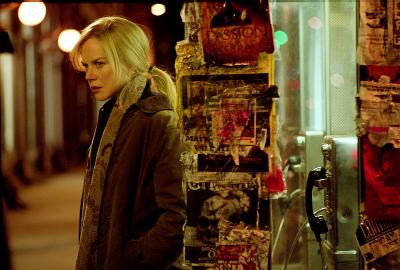
Kidman and Penn deliver superb and subtle performances, making up for any weak points in the script by not taking it over the top. The auxilliary characters are left largely undeveloped in favor of a more measured study of these two characters, the interpreter and the secret service agent protecting her, as they deal in their own ways with thier own losses.
The political intruige is smart, and takes us inside the guerrila political landscape of a small African country. Therein, liberators become corrupt dictators, opposition forces are branded as terrorists, and even the children are armed. It would be cliche at this point to insert Middle Eastern Islamo-fascist terrorists here. The approach here is a much more novel backdrop against which to understand the lead character, and one that lends itself to an interesting interchange of language and culture.
For the first time, the United Nations allowed a film to be made on the premises. This was an incredible production challenge, as they had only late Friday night until early Monday morning to work, including staging everything through the night on Friday and tearing everything down and getting it out by early Monday morning. They went through this process fix or six weekends from what I recall in the American Cinematographer article on the film. This was the challenge of director Sydney Pollack (Tootsie, Out of Africa) and DP Darius Khondji (Se7en, The Beach, and Wong Kar Wai's next film).
Great actors, great locations, great direction and photography, great use of language. The kind of film I'd be proud to make myself.
2 comments:
Also saw this recently. I liked it as well. Pleasantly surprised, as I didn't expect much.
I think I plan to purchase this DVD, for the special feature where Pollack explains widescreen vs. pan & scan alone. It'd be great to show uninformed guests.
Unfortunately, we only have a VCR in our hotel, so we rented this on VHS. No widescreen for us. It was especially a problem, because this was an anamorphic film with a 2.35:1 aspect ratio, and there were lots of shots that weren't composed right in 4:3.
This is the first time I really noticed the anamorphic quality of the cinematography. You could see a bit of distortion and focus fall-off towards the corners of the image. Also, the bubbles of out-of-focus light (Bokeh) were vertically eliptical instead of just round circles. Reading the AC article before I saw it gave me a unique perspective.
Post a Comment